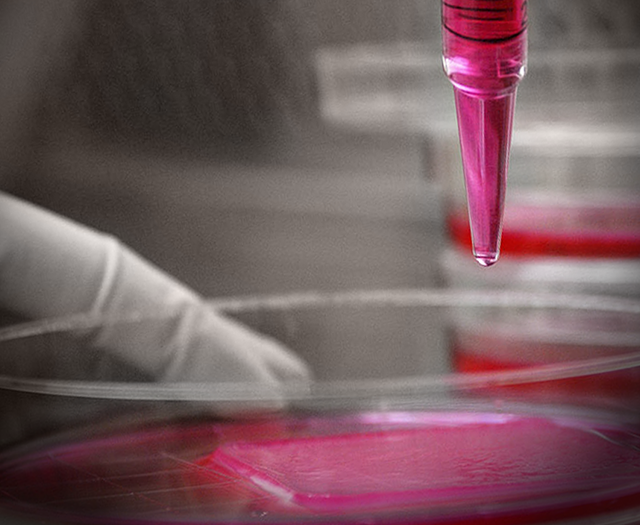Visualizing & Quantifying the Genius of Stem Cell Fat Transfers
The application of regenerative medicine to other branches is constantly being explored and with exciting prospects. This can be seen with the use of stem cells in aesthetic medicine procedures, like fat grafting.
Fat grafting (FG) is used in cosmetic procedures to replace volume generally lost due to aging or illness, or to treat deeper wrinkles and folds. FG involves extracting a patient’s own fat (autologous fat) and then re-injecting it into the areas needing treatment. It was originally developed in 1893 by Gustav Neuber and was proposed as an injectable as early as 1919 by Eugene Höllander. In the 1990s, it became an increasingly popular technique to improve fat graft retention. (1 + 2)
Stem cells (and progenitor cells) act as a repair system for the body. Most cells are “born” specialized, programmed to carry out a specific function. Stem cells are “multipotent”, having the ability to selfrenew and develop into many different types of cells. They can replenish and rejuvenate tissues. (3)
An adipose-derived stem/stromal cell enriched fat graft, MSC(AT)-enriched FG, is a procedure involving extracting a patient’s autologous fat and enriching it with their own ex-vivo, laboratory expanded stem cells before injecting it back. MSC(AT)-enriched FG noticeably improves skin quality and helps to increase activity in the dermis, boosting the circulation, regenerating collagen and elastin production and intensifying hydration. (4)
Despite sharing certain procedural similarities, FG and MSC(AT)-enriched FG are poles apart. In essence, FG does not have the regenerative and rejuvenating capacity of MSC(AT)-enriched FG: fat normally contains a 5000-10000 concentration of MSC(AT) per ml that is significantly increased by expanding the cells ex-vivo, yielding a more potent regenerative and rejuvenating environment. (5+6)
However, not all MSC(AT)-enriched FGs are equal. According to StemMedical® (7), a revolutionary life science company with knowhow focused on stem cells, it’s the concentration of stem cells used in fat grafting that will have a profound effect on graft survival rates. As ASCs are more robust than mature fat cells when used in aesthetic procedures, boosting their ratio to fat (2000 times) ex-vivo, significantly improves fat graft survival after re-injection, improving the durability of fat retention and in turn, the efficacy of the cosmetic procedure. Results are far superior compared to a non-enriched fat graft. (5+6)
LifeViz® and StemMedical® have joined forces on a case study to actually show how this manifests.
LifeViz®– a natural partner for visualizing results
On a cellular level, the genius of stem cells is obviously beyond the naked eye, but this is where LifeViz® comes into its own – it is a real asset for visualizing and quantifying results. As illustrated in the case study, LifeViz® enables practitioners to objectively compare Before and After images in lifelike 3D and patients to appreciate the results over time. Volume changes can be quantified with precision, showing the durability of the fat graft retention and, in turn, the aesthetic result. LifeViz® facial skincare analysis assists in indicating the degree of improvement in skin quality. For practitioners, being able to show patients tangible results is crucial for generating loyalty, trust and returns.
Synergy between regenerative and aesthetic medicine is opening the way to exciting treatment possibilities. With LifeViz®, these results can be visualized, quantified, compared and understood – a real asset for both physicians and patients.
Refs :
(1)Fat Grafting Challenges and Debates. Sydney R. Coleman, Samuel Lam, Steven R. Cohen, Behnam Bohluli, Foad Nahai. Atlas Oral Maxillofacial Surg Clin N Am 26 (2018) 81–84
(2) Evolving of Concepts of Fat Grafting and Regenerative Surgery. Richardo F. Mazzola. Book: Plastic and Aesthetic Regenerative Surgery and Fat Grafting, 2022
(3) Stem cells: An overview with respect to cardiovascular and renal disease. Rajnish Kumar, AnjuSharma Ashok Kumar Pattnaik and Pritish Kumar Varadwaj. Journal of Natural Science, Biology and Medicine, July 2010, Vol 1, Issue 1.
(4) Adipose-derived stromal cell in regenerative medicine: A review. Reza Tabatabaei Qomi, Mohsen Sheykhhasan. World J Stem Cells 2017 August 26; 9(8): 107-117
(5) Enrichment of autologous fat grafts with ex-vivo expanded adipose tissue-derived stem cells for graft survival: a randomised placebo-controlled trial. tig-Frederik Trojahn Kølle, Anne Fischer-Nielsen, Anders Bruun Mathiasen, Jens Jørgen Elberg, Roberto S Oliveri, Peter V Glovinski, Jens Kastrup, Maria Kirchhoff, Bo Sonnich Rasmussen, Maj-Lis Møller Talman, Carsten Thomsen, Ebbe Dickmeiss, Krzysztof Tadeusz Drzewiecki. Lancet 2013; 382: 1113–20.
(6) Ex vivo-expanded autologous adipose tissue-derived stromal cells ensure enhanced fat graft retention in breast augmentation: A randomized controlled clinical trial. Stig-Frederik T. Kølle,
Dominik Duscher, Mikkel Taudorf, Anne Fischer-Nielsen, Jesper D. Svalgaard, Lea Munthe-Fog, Bo Jønsson, Peter B. Selvig, Frederik P. Mamsen, Adam J. Katz
(7) STEMMEDICAL® is the first company in the world to offer a unique, patented technique that enables specially certified private hospitals to offer Stemform® Facial Rejuvenation with autologous adipose-derived stem cells (ASCs).

